In last month’s kickoff to our Bone/Joint Health Editorial Series, we discussed bone density, as well as some of the potential options that help maintain it. However, that is only one part of a much larger equation for bone health. Many of the measures that go toward bone density cannot achieve their full purpose without bone flexibility, an important facet of bone health that can often go neglected despite its value. With that said, there are options out there to help support your bone flexibility and overall bone health at the same time.
Many may be quick to ask if there is any difference between maintaining your bone density and your bone flexibility. While both are intertwined, it is easy to neglect bone flexibility in your diet and supplemental choices, a decision that could be potentially harmful. Timothy Mount, CN, CCMH, director of education for NeoCell Corp., Irvine, CA, explains, “Bone flexibility is equally, if not more important than bone density. A bone that is dense but inflexible will be brittle and fracture easily.” He adds that flexible bones are also less likely to be damaged from a fall.
Supporting bone flexibility is about more than risk aversion, though. Maggie Frank, educator at Vibrant Health, Canaan, CT, says that maintaining flexibility and strength are both necessary to support the body 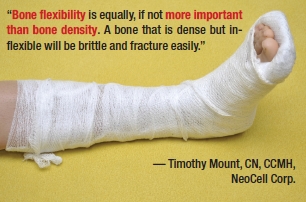 and maintain fluid, pain-free movement. Certain activities are also particularly dependent on strong bone flexibility. Paul Dijkstra, president and CEO of InterHealth Nutraceuticals, Benicia, CA, explains that bone flexibility and knee extension are not only important for sports-related activities like jumping, running and lifting, but everyday activities as well.
and maintain fluid, pain-free movement. Certain activities are also particularly dependent on strong bone flexibility. Paul Dijkstra, president and CEO of InterHealth Nutraceuticals, Benicia, CA, explains that bone flexibility and knee extension are not only important for sports-related activities like jumping, running and lifting, but everyday activities as well.
While the benefits of bone flexibility are vital to everyone, certain segments of the population are at greater risk if it is neglected. Kathy Lund, vice president of marketing and new business development of AIDP, Inc., City of Industry, CA, says that post-menopausal women in particular should be more concerned with osteoporosis and fracture, citing information from the National Osteoporosis Foundation that says approximately one in two women and up to one in four men over age 50 will develop an osteoporosis-related fracture in their lifetime. Osteoporosis is responsible for more than 1.5 million fractures annually. Lund also adds that hip fractures are increasing most rapidly among Hispanic women.
Bending Over Backwards
So, if keeping bones flexible is such an important part of keeping them healthy, why do people at large seem to be unaware of what is needed to maintain it? A large part of it is misperception. According to Daniel Heller, N.D., senior scientific affairs associate at Life Extension, Ft. Lauderdale, FL, believes “bone density may have been overemphasized in part because the technology exists to measure it. And, the evidence is quite strong that as people age, more dense bones are less susceptible to fracture.” However, as previously mentioned, density is only one part of a larger equation. Several of our experts used the example of chalk as something that is very dense, but shatters when dropped due to its brittle state.
Many consumers consider calcium to be the be-all end-all of bone health, and while it plays an important role, the prime nutrient in the bone flexibility conversation is collagen. Dijkstra describes 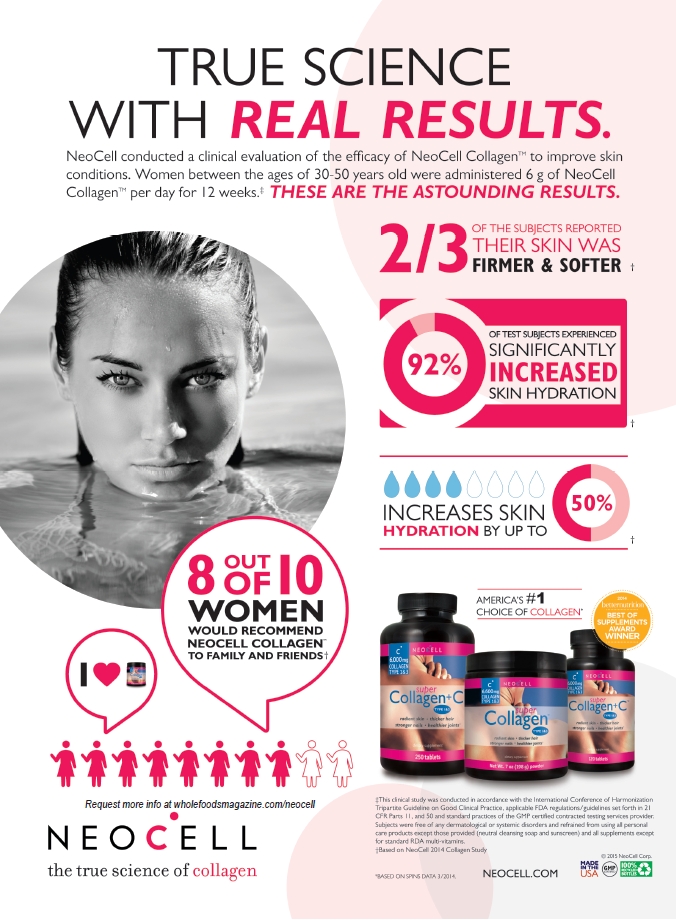 collagen as a “protein that provides a soft framework” along calcium, which adds strength and hardens the framework. “This combination of collagen and calcium makes bone both flexible and strong, which in turn helps bone to withstand stress,” he says. Nick Bitz, N.D., chief scientific officer at Youtheory, Tustin, CA, adds that bone is nearly 30% collagen by dry weight, and in addition to this flexible framework, it provides “binding sites” for bone minerals like calcium and phosphorous.
collagen as a “protein that provides a soft framework” along calcium, which adds strength and hardens the framework. “This combination of collagen and calcium makes bone both flexible and strong, which in turn helps bone to withstand stress,” he says. Nick Bitz, N.D., chief scientific officer at Youtheory, Tustin, CA, adds that bone is nearly 30% collagen by dry weight, and in addition to this flexible framework, it provides “binding sites” for bone minerals like calcium and phosphorous.
Collagen can’t get this job done alone either, as Mount explains that “collagen without the hardening effect of calcium would result in a bone that is too bendable and unable to hold the full weight of a person’s body.” Perhaps a better way to picture the relationship is like a skyscraper, where cement may be a primary component, but the steel framework that holds everything in place is every bit as important.
Richard Passwater, Jr., product educator at Bio Minerals NV, Destelbergen, Belgium, believes “resistance against fracture is perhaps 80% dependent on bone quality as opposed to about 20% strictly bone density. And bone quality is heavily dependent on the quantity and quality of bone collagen.”
He also brings up an example he commonly hears in the bone research community, where a 75-year-old woman can have the same bone mineral density as a 35-year-old woman, but can have a fracture risk four to seven times higher. The difference here, Passwater explains, is that the 35-year-old has a much higher bone quality.
Lund also points out that much of the nutritional supplementation available for people with osteoporosis has long been focused on calcium, vitamin D and recently vitamin K, “but all these approaches are addressing the calcium deficiency only.” It’s also important to note that calcium supplementation often requires proper levels of other nutrients to be most effective. Magnesium is one of the most common examples, but others like boron are also needed to ensure you get the most of the calcium that is already only one part of what is needed for healthy bones (1).
While collagen and calcium are both essential for bone health, some believe that collagen may be as important a supplemental choice for overall bone health. Lund notes that in addition to collagen (which supplies the framework for bones) and calcium–phosphate mineral complexes (which fill the framework), the third major component of bones are living bone cells that remove and replace weakened sections of bone. “Collagen works to support healthy function in all components of the living bone tissue, which is why it trumps calcium supplements,” she says. Mount also adds that some collagen supplements have been shown to stimulate osteoblasts, the cells that produce new collagen in bone. He believes that this means collagen supplementation “may support the formation of new collagen within the bone—possibly leading to improved bone flexibility.” In addition to the versatility of collagen supplementation, he says “collagen production declines by 1.5% per year after the age of 25 years old, so a 65-year-old may have lost 60% of their collagen production.” This means that a large swath of the population stands to benefit from supplemental collagen, not just the elderly—although the need for it may increase with age.
Choosing Your Collagen
While collagen supplementation may be valuable both for bone flexibility and bone health overall, there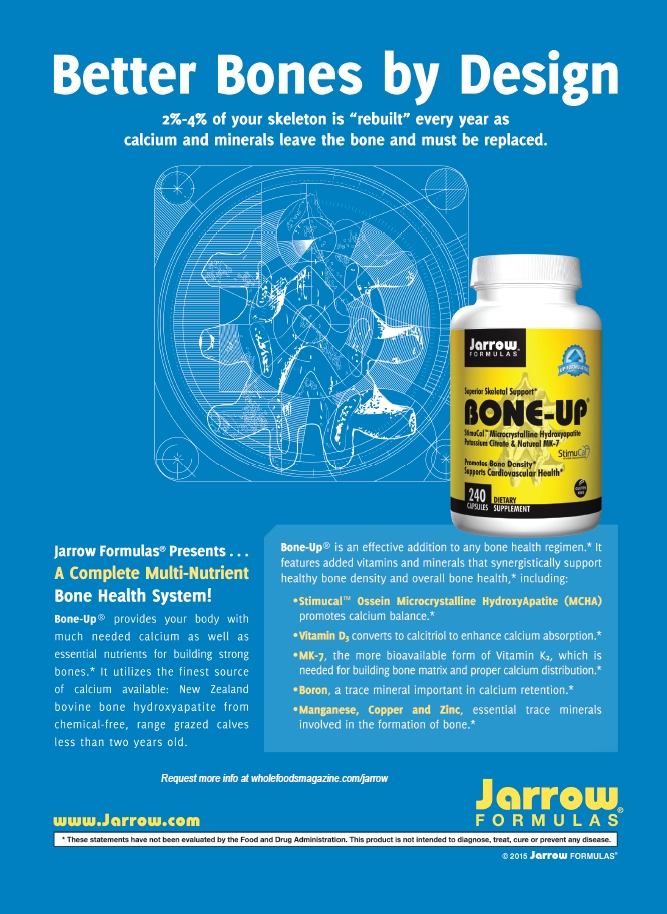 still remains the question of which format is the best choice. As it stands, there are many varieties to pick from, but the reasons to choose one over another may not be the ones you think. Bitz begins the discussion by saying “It’s less about the form of delivery, and more about the grade of collagen used in the product. Low-grade collagen is very poorly absorbed into the body, regardless of which delivery system is used.”
still remains the question of which format is the best choice. As it stands, there are many varieties to pick from, but the reasons to choose one over another may not be the ones you think. Bitz begins the discussion by saying “It’s less about the form of delivery, and more about the grade of collagen used in the product. Low-grade collagen is very poorly absorbed into the body, regardless of which delivery system is used.”
Suhail Ishaq, president, BioCell Technology, Newport Beach, CA, agrees that quality and bioavailability of collagen are the most important things to consider when choosing a supplement. His company offers a branded ingredient made through a patented hydrolysis manufacturing process designed to reduce collagen into a very low-molecular weight form, making for easier absorption.
Since higher-grade collagen is absorbable in multiple forms, the tablet-liquid-powder debate becomes less about effectiveness and more about consumer preference, although in certain cases, this is still a factor. Mount brings up the example of elderly people perhaps wanting to avoid tablet delivery systems due to difficulties swallowing.
Mount also brings up some other factors that are important to consider when making your collagen choice. One concern is dosage. In addition to bone flexibility, collagen has also found some use in beauty supplements—but while one supplement “may be appropriate for a maintenance dose for a person looking for beauty benefits, it may not be a high enough dose for adequate bone health support.” He recommends a dosage of around 2,500– 6,600 mg of collagen for a bone supplement.
Another thing to consider is the type of collagen you take. There are at least 28 different kinds of collagen identified in the human body, though the majority of bone collagen is type-1, which is also found in the skin, artery walls, teeth and tendons (1). Sometimes, though, combining types of collagen may be potentially valuable. Frank says that her company offers a collagen supplement that combines type-1 collagen with type-2 collagen, normally found in hyaline cartilage and the cornea of the eye, to support bone and joint flexibility. She also agrees with Mount that a high enough dose is a necessity for bone support in collagen supplements.
Ishaq points out that hydrolyzed type-2 collagen, unlike its unhydrolyzed counterpart, has been shown to stimulate novel biosynthesis of type-2 collagen. “The data suggest a very intriguing hypothesis that 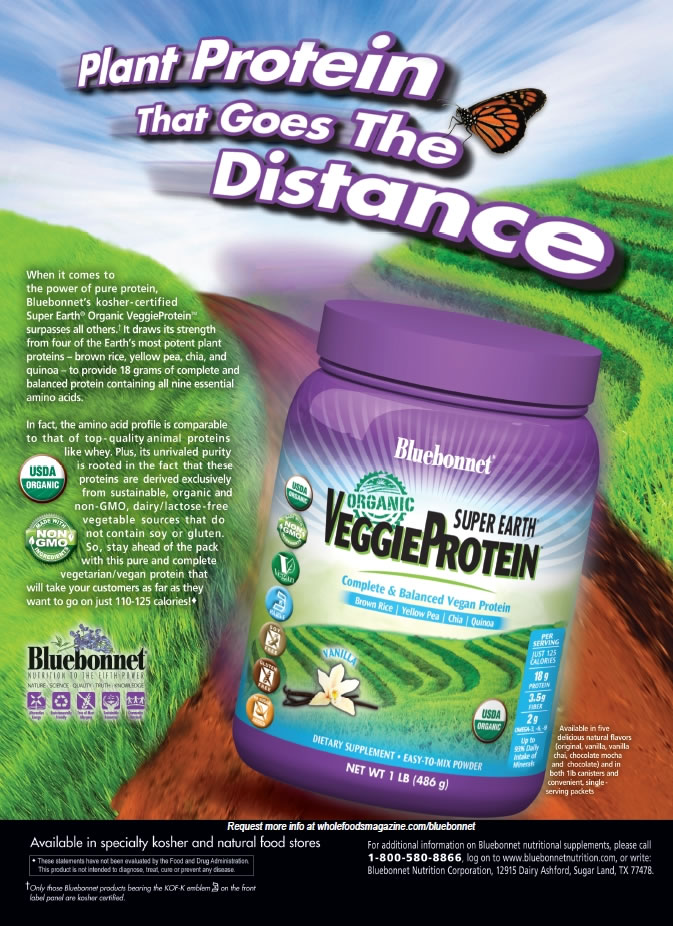 hydrolyzed type-2 collagen may directly stimulate the resident cells in the cartilage to produce its matrix components, thereby promoting joint structure and function,” he says.
hydrolyzed type-2 collagen may directly stimulate the resident cells in the cartilage to produce its matrix components, thereby promoting joint structure and function,” he says.
In addition to the nature of collagen itself, many collagen supplements also have other nutritional components that can contribute to bone flexibility, and these combinations may be the ideal choice for some situations. One example that Heller recommends is calcium collagen chelate, which he says “delivers the two most essential components of bone, together in one compound, and has been demonstrated to strengthen bone.” In one study published in the Journal of Medicinal Food, 39 osteopenic women were either given 5 g of calcium containing 500 mg of elemental calcium and 200 IU vitamin D or a control supplement of 500 mg of calcium and 200 IU of vitamin D daily for 12 months. Blood markers were taken at baseline, 6 months and 12 months to determine levels of bone turnover. The results showed a significant decrease in bone mineral density loss in the chelate group at 1.23% versus the control group at 3.75% (2). This suggests that the calcium/collagen combination can be more supportive of overall bone health than strictly calcium supplementation—flexibility included.
Alternative Options
While Passwater agrees that collagen is paramount for bone flexibility, he believes in another supplemental method to go about getting it. His company offers a collagen supplement that specializes in activating and supporting enzymes that produce new collagen by utilizing choline-stabilized orthosilicic acid, a highly bioavailable form of silica, as a primary ingredient. The body links several amino acids together to form procollagen, but it is the enzymes that convert them to the collagen that we ultimately need.
In one study published in BMC Musculoskeletal Disorders, choline-stabilized orthosilicic acid was tested in 184 osteopenic but otherwise healthy women in a double-blind, placebo-controlled trial. The women were given either one of three choline-stabilized orthosilicic acid dosages (3, 6 and 12 mg) daily or a placebo. In addition, all the women were given 1,000 mg of calcium and 800 IU of vitamin D3. Bone formation markers were measured at baseline, six months and 12 months, while femoral and lumbar bone mineral density were tested at baseline and after 12 months. The results showed a 15% increase in bone collagen generation and a 2% increase in bone mineral density in the choline-stabilized orthosilicic acid group over placebo at the 12-month mark (3).
In addition to the many varieties of collagen supplements available, some experts believe other options help support healthy collagen levels. Some examples highlighted by Bitz are carotenoids, which help slow collagen degradation in the body. Soy genestein and sulfurophanes help stimulate the production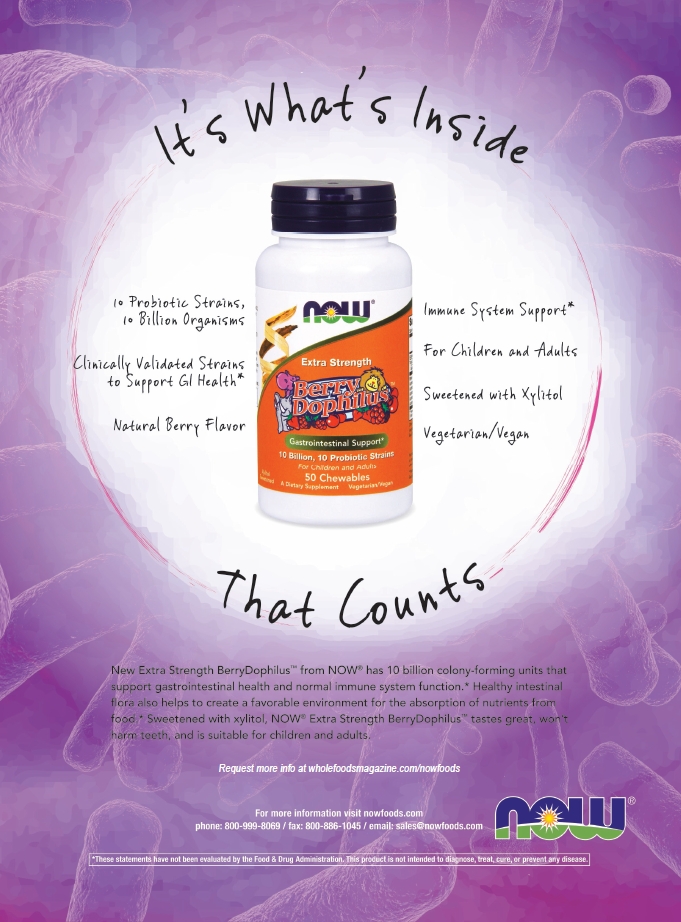 of new collagen, and tea catechins and pine bark extract can do both. For a future option, he says he would “love to see digestive enzymes and digestive stimulants (such as betaine hcl) in the bone category as well.” Bitz’s interest in these two novel and holistic approaches for bone flexibility stems from their ability to address malabsorption and malnutrition, which can cause issues for bone flexibility and general health caused by a nutrient-deficient diet.
of new collagen, and tea catechins and pine bark extract can do both. For a future option, he says he would “love to see digestive enzymes and digestive stimulants (such as betaine hcl) in the bone category as well.” Bitz’s interest in these two novel and holistic approaches for bone flexibility stems from their ability to address malabsorption and malnutrition, which can cause issues for bone flexibility and general health caused by a nutrient-deficient diet.
Lund says that for those looking for unique delivery options, collagen-fortified functional foods could be a possible choice. She cites an article published by IFT (Institute of Food Technologists) that says eight out of 10 consumers believe functional foods can help with osteoporosis. With this level of consumer interest, that choice in delivery system may draw people toward the collagen category that may have not been that interested otherwise.
While the majority of people will want to pursue supplemental options to enhance their bone flexibility, there is an important complement that shouldn’t be missed: weight-bearing exercise. According to Ishaq, weight-bearing exercise can help activate osteoblasts, and climbing stairs, hiking or running for around 30 minutes a day can help improve overall flexibility. “Aerobic workouts plus resistance training offers better results than either one by itself,” he adds, but for those unable to do more high-impact activity, walking uphill is a viable choice.
Passwater says that the unique nature of bone plays into its relationship with exercise in that: “Bone is an organ. But bone functions much like a muscle in the regard that if you don’t use it, you’ll lose it. The body doesn’t like to maintain tissue that it doesn’t think it needs.” He brings up space travel as an example of what can happen when weight isn’t regularly applied to bones, where it is common for astronauts to lose 1–2% of their bone mineral density for each month they are in space (4).
In addition to weight-bearing exercise, several other physical activities may support bone flexibility. Bitz recommends a “daily ‘self-massage’ (known as abhyanga in Ayurveda), which can help nourish the body’s tissues...and (in theory) keep bones soft and supple as you age.” Dijkstra says that simple stretching can also support more flexible bones and joints, with knees being a particularly vital area to support everyday activities. Heller suggests that diversity may be key in your exercise plan, explaining “a variety of types of exercise may, by subjecting your bones to different types of stresses, help make bones stronger and more flexible, compared to repetitive exercises that only work within one narrow range of motion.”
Bringing It Together
A common thread throughout the discussion on bone flexibility is that no single element works alone. As a result, in addition to collagen, other supplement options and lifestyle changes such as exercise, overall nutrition is a paramount concern for maintaining bone flexibility. Heller emphasizes that “the fact is many people don’t get adequate amounts of established, known bone-supporting nutrients from their diet and supplements now.”
|
Select Bone Flexibility Supplements Interviewees were asked to share their AIDP: KoACT. BioCell: BioCell Collagen. Bio Minerals NV: BioSil Beauty, Bones, Joints, BioSil Hair, Skin, Nails, BioSil Bone Collagenizer Matrix, BioSil Bone Mineralizer Matrix, BioSil Healthy Bones Plus. InterHealth Nutrecuticals: UC-II. Life Extension: Bone Restore with vitamin K2, Bone Strength Formula with KoACT (Calcium collagen chelate),Bone Restore. NeoCell: Bone Matrix from the Platinum Matrix line, Super Collagen Line. Vibrant Health: Joint Vibrance. Youtheory: Youtheory Collagen Types 1, 2 and 3 (tablets), Youtheory Collagen Type 1 and 3 (tablets)(powder) Youtheory Liquid Collagen, Youtheory Collagen Protein Shake (powder), Youtheory MENS Collagen Types 1, 2 and 3 (tablets), Youtheory MENS Collagen Protein Shake (powder). |
Among the nutrients that he finds missing from many diets are vitamin D, magnesium and vitamin K. Vitamin K in particular is one nutrient he says many people are unaware is important to bone health. Zinc and copper are also important, helping form, support, and stabilize collagen in the bone matrix (1). Bitz adds vitamin C and liquid trace minerals to the list of vital nutrients, and says that since bone is a living tissue that is constantly being broken down and renewed, “it’s imperative that you provide the body with a constant stream of nutrients to help build healthy bone tissue.” Due to this need, he sees bone health as a direct correlate to one’s nutritional status in many cases.
One thing to consider is that not only are increasing levels of certain nutrients important, but a reduction of potentially harmful factors may also be needed. Mount brings up overconsumption of acidifying foods. He explains that “since blood must remain at a very specific pH level, a person’s body will sacrifice the minerals within a bone to neutralize an acidic blood pH. A long-term reduction in calcium may lead to bones that are overly flexible and show signs of malformation, such as bone bowing.” Passwater also brings up the amino acid homocysteine as something that needs to be addressed in the bone flexibility conversation, as he dubs it “the anti-collagen amino acid,” due to its interference with collagen production and crosslinking. Folic acid, vitamin B12 and vitamin B6 can play a role in helping neutralize homocysteine; vitamin B12 in particular is valuable due to its role in promoting osteoblast formation, he adds.
According to Lund, some issues surrounding bone flexibility and the well-rounded nutrition needed to support it may stem from consumer confusion. She references an editorial in the October 28 issue of the British Medical Journal, where “researchers warned that three glasses of milk a day might not be the best nutritional advice for women, most women will continue to believe that milk or calcium from dairy or foods fortified with calcium and vitamin D provide the best support for bone health (5).” While this is not the case, the perception is still out there. Ultimately, retailers can contribute to clearing up some of the misconceptions surrounding bone flexibility, both by explaining its specific role and what specifically supports it while suggesting supplemental pairings for what their consumers are already buying for bone health to ensure that they get the nutrients they need. WF
References
1. M. Schauch, Collagen: Myths and Misconceptions. (Mind Publishing, Coquitlam, BC Canada, 2015).
2. Elam Marcus L. et.al., “A Calcium-Collagen Chelate Dietary Supplement Attenuates Bone Loss in Postmenopausal Women with Osteopenia: A Randomized Controlled Trial”, J. Med. Food, 18 (3), 324–331, (2015).
3. D. T Spector et.al., “Choline-stabilized orthosilicic acid supplementation as an adjunct to Calcium/Vitamin D3 Stimulates Markers of Bone Formation in Osteopenic Females: a Randomized, Placebo-controlled Trial.” BMC Musculoskel. Disord., 9 (85), 2008.
4. NASA, “Good Diet, Proper Exercise Help Protect Astronauts’ Bones,” http://www.nasa.gov/mission_pages/station/research/news/bone_study_news.html, accessed 5/11/15.
5. C. Mary Schooling, “Milk and Mortality.” BMJ, 349, (2014).
Published in WholeFoods Magazine, July 2015, (online 6/12/15)

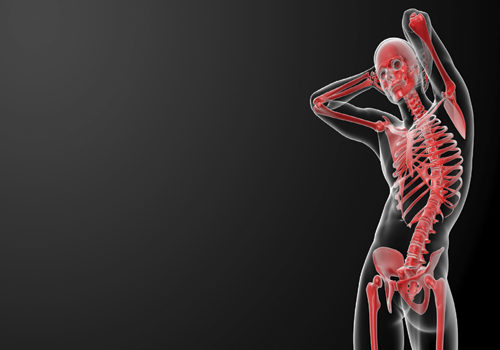
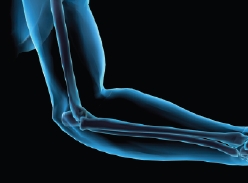 top-selling bone flexibility supplements, and here’s what they had to say:
top-selling bone flexibility supplements, and here’s what they had to say:






